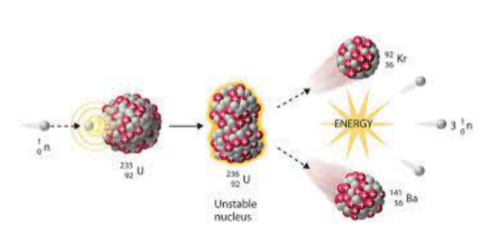In 1938, chemists Otto Hahn and Fritz Strassmann bombarded a uranium nucleus with a neutron. To their surprise, they discovered that barium and krypton were produced. This division of heavy nuclei was termed “fission,” and since its discovery it has deeply intrigued physicists. For decades, physicists have puzzled over why the resulting fragments spin after nuclear fission. A recent study between scientists from France, Germany, the UK, and other European countries offers clear answers.
At the IJC Laboratory in Orsay, France, scientists used high-resolution spectroscopy to inspect the fission of 232Th, 238U, and 252Cf. They specifically used a method from the University of Manchester to measure the average spin of the fission fragments. They discovered that the fragment spin appeared to depend only on the fragment mass, not the mass of the original nucleus or the mass or charge of its partner fragment. Their results deny hypotheses that the spin is generated before the nucleus splits (pre-scission), as these hypotheses predict equal magnitude spins for partner fragments. The large asymmetries in the angular momentum between the spins of heavy and light partner fragments support a post-scission hypothesis and the idea that each of the fragments should be treated as independent quantal—discrete—systems.
Beyond deepening a fundamental understanding of fission, these findings have important applications for nuclear energy, since fragment spins influence the heating effects of reactor gamma rays. This research may help unlock the full potential of nuclear fission.
Sources:
Wilson, J.N., Thisse, D., Lebois, M. et al. Angular momentum generation in nuclear fission. Nature 590, 566–570 (2021). https://doi.org/10.1038/s41586-021-03304-w

